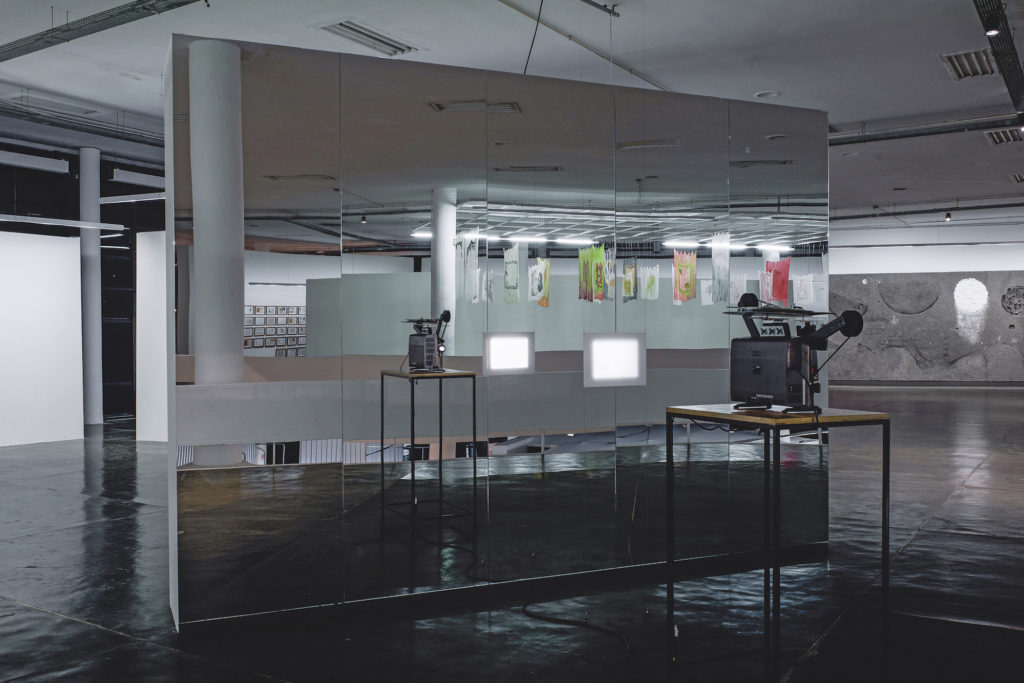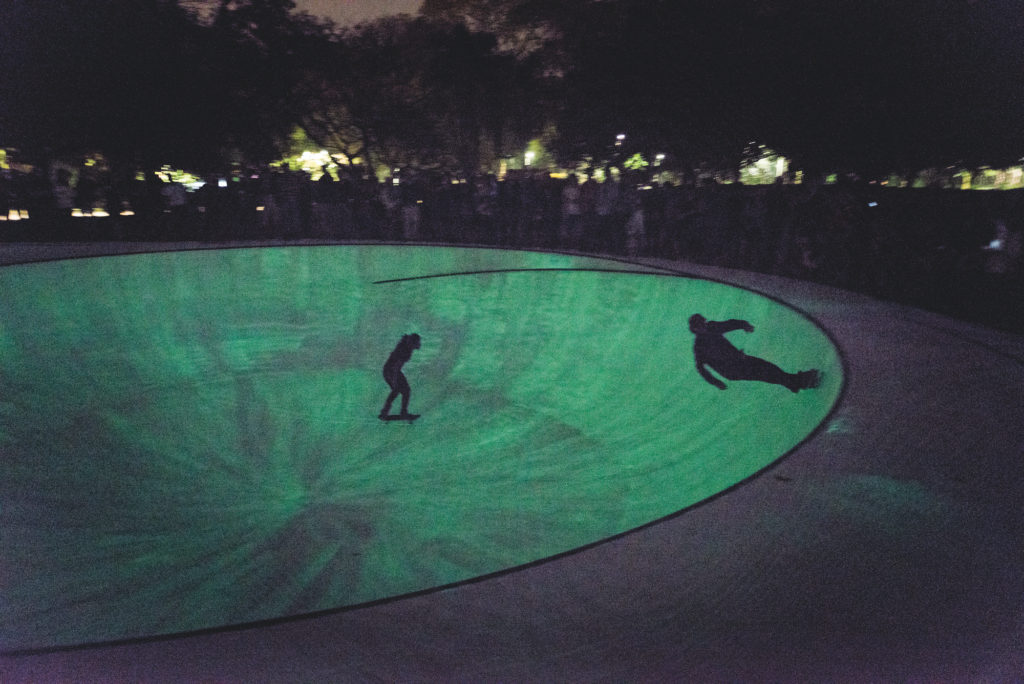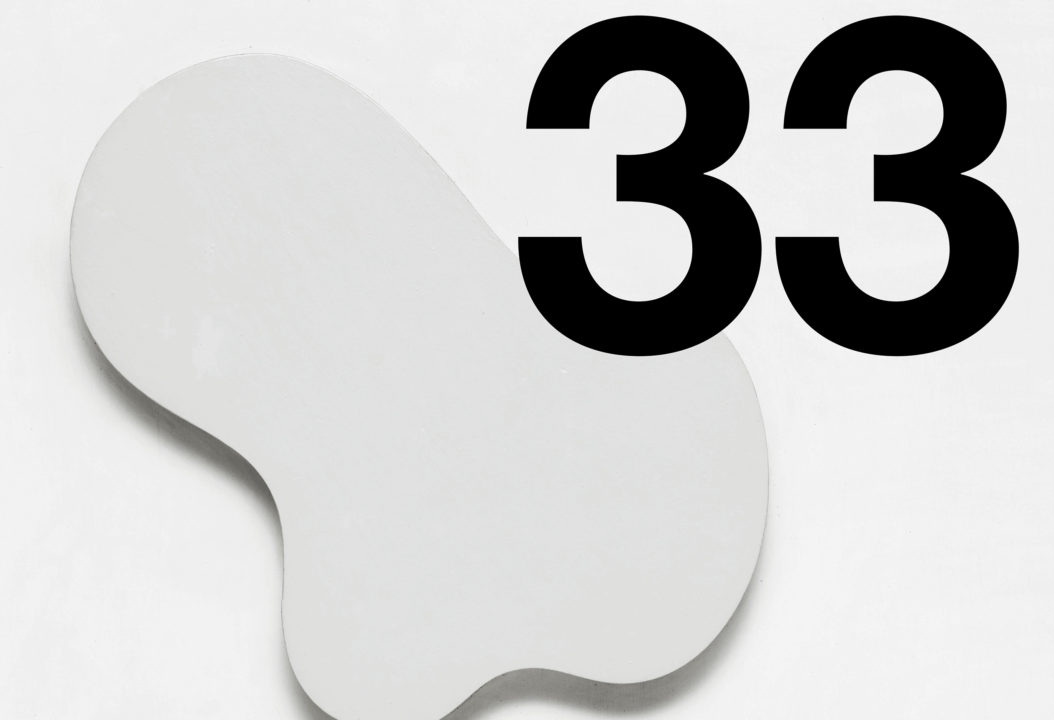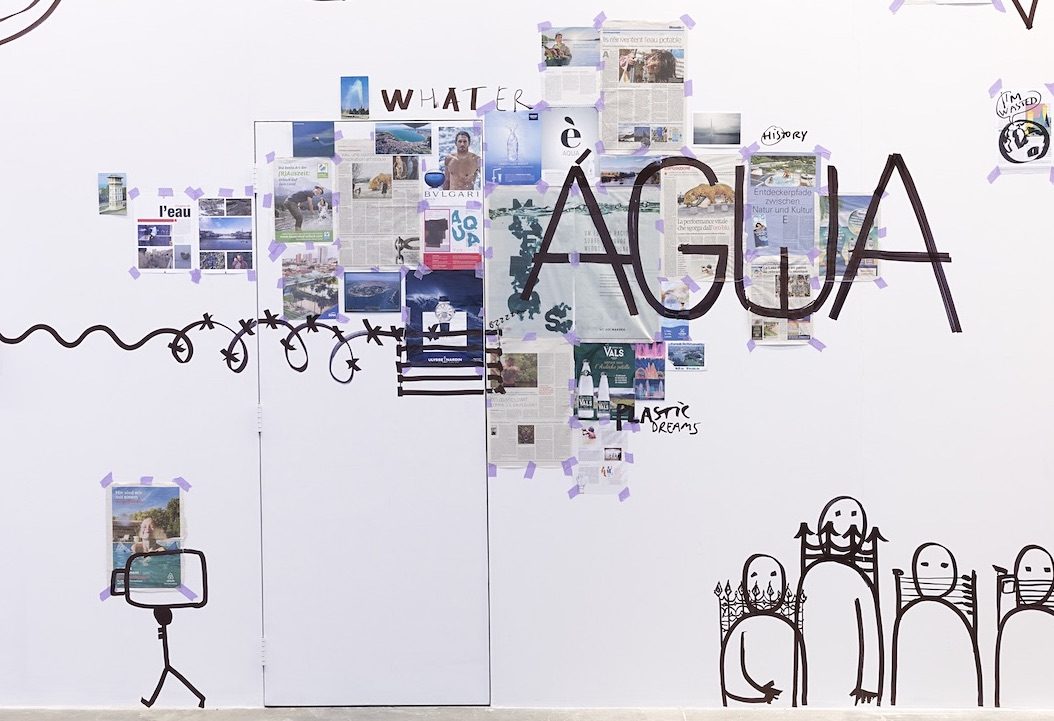JOCHEN VOLZ
Guided by Uncertainty
- 17.12.2018
Frans Krajcberg, Sem título (Coqueiros) [Untitled (Coqueiros)], n.d. Sculptures of wood from burnings and natural pigments. 62 pieces, dimensions variable. View of Incerteza Viva (Live Uncertainty), the 32nd Bienal de São Paulo, 2016. Presentation produced in partnership with Sesc-SP.
Unless otherwise noted, all photos © Leo Eloy / Estúdio Garagem / Fundação Bienal de São Paulo
On view between September and December 2016 and entitled Incerteza Viva (Live Uncertainty), the 32nd Bienal de São Paulo was premised on the understanding that art is a practice that promotes active exchange between people, and that uncertainties are generative and constructive systems. A series of four Study Days was held from March to June 2016, both as part of the research for the Bienal and as a first component in its public programme. Through discussions of the thematic panorama of Incerteza Viva with the public and with scholars from different disciplines, the Study Days expanded the biennial’s temporal and territorial reach, examining the concepts that surround uncertainty.1
Frans Krajcberg, Sem título (Coqueiros) [Untitled (Coqueiros)], n.d. Sculptures of wood from burnings and natural pigments. 62 pieces, dimensions variable. View of Incerteza Viva (Live Uncertainty), the 32nd Bienal de São Paulo, 2016. Presentation produced in partnership with Sesc-SP.
Unless otherwise noted, all photos © Leo Eloy / Estúdio Garagem / Fundação Bienal de São Paulo
Each held in a different place, the Study Days served as the starting point of a collaboratively developed biennial project in São Paulo. In Cuiabá, the capital of the state of Mato Grosso, which is also in the geographical centre of South America and the heart of the Cerrado ecoregion, we explored one of the richest and most fragile biomes in the world. Bordered on the south by the Pantanal wetlands, this Brazilian savanna is the gateway to the Amazon. It’s also a land of depleted soil and monoculture, of extinct species and forgotten knowledge, a place where we could talk about extinction and preservation, scarcity and abundance, drought and flood. In Santiago, Chile, one of the Study Days looked at cosmologies and the relationships between art and science, myth and history from a present-day perspective. Accra, Ghana, was a point of return for many former slaves from Brazil, a locale of new beginnings, of community building, of projections and collective dreams. It provided inspiration for discussing the necessity of multiple historical narratives. Lamas, in the Peruvian Amazon, is a place shaped by historical layers where we learned about traditional Quechua education and their people’s human connections with nature, addressing Indigenous technologies of land cultivation and medicinal knowledge, among other questions.
Each Study Day developed from direct contact with the earth – with local soil, rocks and waters – and with local cultures: local kitchens, languages and imaginations. The Study Days included walks and field trips to cultural centres, native communities, ecological reserves, artist studios and reference and research centres. They also featured public conferences, bringing together invited speakers and local professionals from different backgrounds and disciplines. These meetings sought to promote exchange between the local organisers, hosts and invited guests, establishing the basis for a dialogue that would develop ways of thinking and creating together.
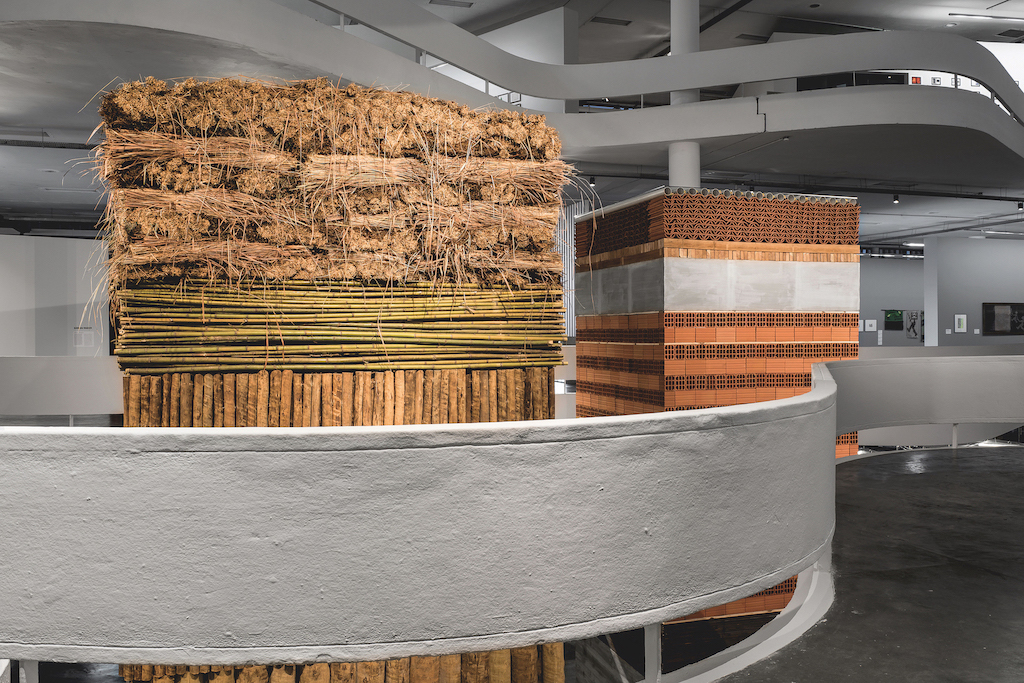
Lais Myrrha, Dois pesos, duas medidas, (Double Standard), 2016. Concrete, brick, mortar, roof tiles, glass, PVC tubes, conduits, wires, metal, wood, palm fibre, bamboo and compacted soil. 8 x 3 x 3 m each. Commissioned by the Fundação Bienal de São Paulo for the 32nd Bienal de São Paulo, 2016.
In addition to researchers and educators from many fields, participants in the Study Days included activists, Indigenous leaders, students and local specialists, as well as several São Paulo Bienal artists. However, these artists had not been invited specifically to produce a work based on their experience. In retrospect, one realises that each artist translated their shared experience in very personal ways, following many directions and at times exceeding their Bienal project.
Pia Lindman integrated magic and microbes into her art making, her healing and her environmental activism. Pilar Quinteros went on an adventurous journey from Santiago to the heart of Mato Grosso. Vivian Caccuri’s piece Tambon Bass traced the musical connections between Jamestown’s highlife scene in Accra and the funk scene in São Paulo. Dineo Bopape Seshee translated the ancient game Mancala into sculptures made out of earth. Rita Ponce de Leon mixed the insight she gained from the Quechua experience of life in close relation to the earth with Japanese Butoh dance to make her interactive sculpture En forma de nosotros. Jorge Menna Barreto’s Restauro was inspired in many ways by Indigenous cuisine, its politics of taste and the tradition of displaying food before sharing. Carolina Caycedo, who had already fully developed her project on the horrendous impact of dams on local communities, found new dimensions in the waters of Jamacá. And Bené Fonteles retrieved ancient energies in the geographical centre of the South American continent through rituals, which he has been developing in his artistic practice for decades.
Incerteza Viva developed alongside an increasingly worrisome political situation in Brazil in 2015 and 2016. President Dilma Rousseff was suspended from office in April and removed in August 2016. The opposition then put in place an illegitimate government, a situation that poses a serious threat to Brazil’s democratic principles. Current president Michel Temer was sworn into office a few days before the Bienal’s opening. His popularity has since dwindled and support for his government has fallen below 10 per cent. Political posts were being doled out to party contributors and family members as ministries were dissolved and merged. New revelations confirmed the entanglements of corrupted power daily. Meanwhile, Brazilian society had been polarised by radical rhetoric and biased media coverage. This turmoil allowed Congress, almost unnoticed, to make decisions of the utmost importance, threatening to end established social and health programmes, to privatise national wealth, natural resources, and public education, and to revoke environmental legislation and protection of Indigenous nations and social minorities.
Lais Myrrha, Dois pesos, duas medidas, (Double Standard), 2016. Concrete, brick, mortar, roof tiles, glass, PVC tubes, conduits, wires, metal, wood, palm fibre, bamboo and compacted soil. 8 x 3 x 3 m each. Commissioned by the Fundação Bienal de São Paulo for the 32nd Bienal de São Paulo, 2016.

Hito Steyerl, Hell Yeah We Fuck Die, 2016. Three-channel HD video installation and environment. 4 minutes. Dimensions variable. Commissioned by the Fundação Bienal de São Paulo for the 32nd São Paulo. São Paulo, 2016.
Hito Steyerl, Hell Yeah We Fuck Die, 2016. Three-channel HD video installation and environment. 4 minutes. Dimensions variable. Commissioned by the Fundação Bienal de São Paulo for the 32nd São Paulo. São Paulo, 2016.
In light of these alarming events, Incerteza Viva constantly gained new dimensions, deeply and often surprisingly connected to present-day politics. We observed the developments closely and participated in new forms of mobilisation, increasingly engaging large parts of the population, beyond the political class and parliamentary politics. Many of the issues at stake had been part of our thematic considerations since the beginning. They became increasingly urgent throughout the process. The development of strategic responses to the constantly changing situation was a topic of ongoing discussion among ourselves and with our many interlocutors. Many questions remain unanswered.
More than 900,000 visitors came to the 32nd Bienal de São Paulo exhibition in three months. The itinerant version of Incerteza Viva, along with its accompanying public and educational programmes, reached more people in 2017. Despite this broad outreach, doubt remains. Can the format developed in this biennial edition really hold up to the political developments currently underway in Brazil and in many parts of the world? How can art really help us imagine new utopias? Time and again, we returned to the same conclusion: the Bienal’s fundamental role is to actively promote diversity, freedom and experimentation by exercising critical thought and producing alternative realities. In this regard, the Oficina de Imaginação Política (Workshop for Political Imagination) initiated by artist Amilcar Packer served as a vibrant haven for debate.
Today, we no longer try to understand what artists are doing by asking whether it is art or design, art or education, art or therapy – or whether it is even art. Instead, we understand such polarising categories and narratives as obsolete, not suitable to describe the complexity of our times, nor to envision an alternative path forward through art. Artists freely appropriate disciplines, languages and knowledge systems without apparent hierarchies. Art can operate outside of sheer pragmatism, differently from other fields of social life. It embraces ambiguity and contradiction. It accepts scientific and symbolic knowledges as complementary and non-exclusive. Art feeds off trial and error. The artist merges thinking and doing, reflection and action.
It is therefore the responsibility of an institution like the Bienal de São Paulo not only to present the art made by our contemporaries across various parts of the world, but also to be a platform where the strategies and practices of contemporary artists can be experienced, experimented with and, most importantly, shared with a large audience. A biennial needs to constantly reinvent itself and to unlearn in order to allow for other forms of practice to emerge. It has to take on the role of the listener, to embrace difference and antinomies without instituting new categories, territories or rules. It is about “difference without separability” as Denise Ferreira da Silva calls it in her Bienal catalogue essay.2
Many of the questions and discussions that developed along the way throughout the Bienal brought us back to the beginning, to the Study Days. They taught us much more than a biennial exhibition can bear witness to. We are still connecting the many loose ends, trying to find common ground between them. Of course, our discussions bore many similarities, prompted by comparable questions and worries as well as parallel struggles.
Ultimately, the question of sameness became insignificant once we had felt the many qualities of water in the streamlets feeding the Mapocho River, the Osu creek in Jamestown, the Rio Maya or the falls in the Chapada das Guimarães. Likewise, once we grasped that words accrue different meaning in different land- scapes – such as remembrance and tabula rasa, life and songs, resilience and resistance, trap and moon – we understood the importance of diversification and the potential meaning of sharing difference. The image of a horizontal mesh recurred in many of our conversations, knitted tightly to withstand rupture but elastic enough to connect us all, beautifully guided by uncertainty.
NOTES
1 The 32nd Bienal de São Paulo was curated by Jochen Volz in collaboration with co-curators Gabi Ngcobo, Júlia Rebouças, Lars Bang Larsen and Sofía Olascoaga.
2 Denise Ferreira da Silva, “On Difference Without Separability,” in Catalogue for the 32a Bienal de São Paulo: Incerteza Viva (São Paulo: Fundação Bienal de São Paulo, 2016), 21-27.
ABOUT THE AUTHOR
Jochen Volz is General Director of the Pinacoteca de São Paulo. He was the curator of the 32nd Bienal de São Paulo in 2016, Head of Programmes at the Serpentine Galleries in London (2012-2015), Artistic Director at Instituto Inhotim (2005-2012), and co-curator of the 53rd Biennale di Venezia (2009).

